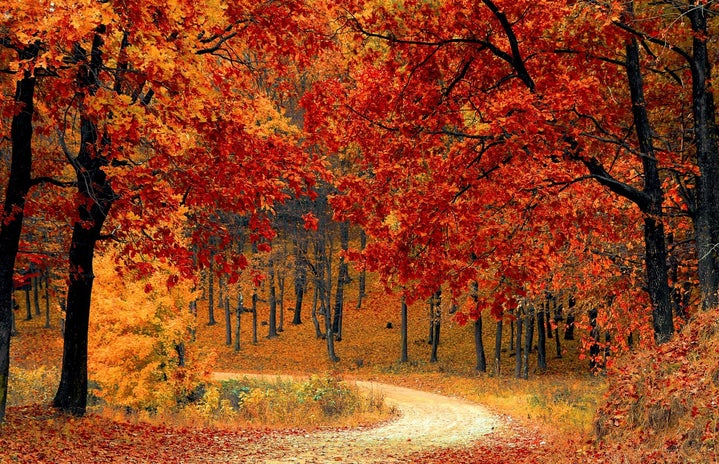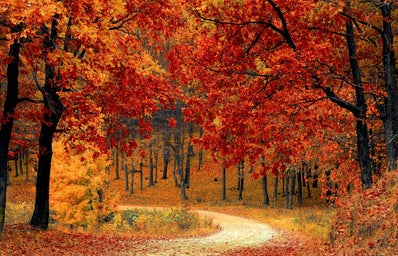In Part 1 & Part 2 of this series, I analyzed the cultural context and appeals to nostalgia within my favorite shows: the 2014 Cartoon Network miniseries Over the Garden Wall. Now it’s about time to discuss what makes this show so outrageously addicting to watch: the whimsically twisted, wickedly intelligent technical & visual elements.
Allusions to Folktales and Classic Literature
By incorporating 19th-and-20th century folklore and classic literary references, the show feels just recognizable enough to be familiar, but is peculiar enough to be worth pursuing. These references also helps provide context and worldbuilding to the audience, since viewers can recognize easily-identifiable archetypes and become aware of their true purpose. One prime example of Over the Garden Wall’s ability to reference classic literature is Adelaide, The Good Woman of the Pasture. This character mirrors the wicked old lady in Grimm’s 1812 classic Hansel and Gretel, as she seems to be a sweet, domesticated helpless woman at first glance. However, she attempts to lure Greg and Wirt into her home so she can fill their heads with wool and make them her child servants. Those who have read Hansel and Gretel before may have been able to pick up on this allusion before the truth was even unveiled about Adelaide.
Another would be the reference to the greek myth of the River Styx, in which dead souls require a coin to enter the land of the afterlife. In “Chapter 5: Mad Love”, Greg and Wirt find an old house with a wealthy old man named Mr. Endicott. After spending hours trying to steal two cents from him so they could afford to pay for a ferry ride to make it to Adelaide’s pasture, Greg impulsively throws their coins into a fountain, and the two sneak onto the ferry instead. On the surface, this appears to be an act of foolishness and poor planning on Greg’s behalf. After all, this would not be out of character for the childish and immature boy. Yet, when examined further through the lens of this literary allusion, viewers realize that Greg actually may have saved himself and his brother by throwing away their fee, as sneaking onto the ferry was an unintentional loophole to avoid locking themselves into a deal with death.
Cohesive Technical & Aesthetic Elements
Over the Garden Wall is rich in mystery, vintage-inspired aesthetics, and autumnal imagery. This makes every aspect of the show incredibly well-rounded, which is furthered by cohesive animation, narrative style, and color palette. The show incorporates references to classic pieces of media which evokes nostalgia and timelessness, such as paying homage to rotoscoping in “Chapter 4: Songs of the Dark Lantern”. The Highwayman, a patron of a tavern that Wirt and Greg stumble inside of on a rainy night, is animated to dance unsettlingly with the classic rotoscoping style [which can be viewed here]. This technique is iconic and was mostly used in 1930s Fleischer Brothers cartoons such as Betty Boop and Popeye, in which animators would trace over real life footage frame-by-frame to create hyper realistic movement. Another example would be within “Chapter 8: Babes in the Wood”. In this episode, Greg experiences a dream sequence in which he enters a utopic cloud world called Cloud City, which is filled with magical animals and cherubs [which can be viewed here]. The editing includes dreamy softening of the edges as a callback to vintage television; it is reminiscent of early Disney animation, particularly the iconic 1923 short “Alice’s Wonderland”, among others. Adding a black circle around this scene is not only a nod to the familiar nostalgia evoked from Disney classics, but provides a distant, peephole-like perspective to Greg’s dream. The audience is merely a set of spectators of his journey that he must face all alone.
NARRATIVE STYLE & COLOR PALETTE
The narrative style of Over the Garden Wall is often used as a tool to heighten the unknown elements of the plot, since emotional and physical belongingness (or, lack thereof) is an incredibly prominent theme throughout the show. For example, the first episode begins in medias res: Greg and Wirt enter the expository scene, walking leisurely through a forested path. After some small talk about what to name Greg’s frog, Wirt exclaims with visible distress: “Wait, wait a second. Uh, Greg? Where… are we?… I-I think we’re lost!”. This introduction allows the reader to feel just as lost as the two half-brothers do, making the audience empathize with their frustration and fear of The Unknown.
Similarly, the show maintains two cohesive color palettes and lighting schemes that correlate with either positive or negative moods. The positive palette includes soft, naturally pooling light with decadent warm tones; at its best, The Unknown is a hazy autumnal world of reds and oranges and rustic browns. The art is often inviting and rich in sensory detail, evoking feelings of bliss, childhood, and acting as a visual tool for the viewers to nostalgically reflect on their own happy memories. When The Unknown begins to feel evil, dark, and confusing, harsh light creates crisp shadows on everything it touches, filling the world with ghastly blacks and sickly blue-greys. Here it provides anxiety, lostness, and emptiness. It feels distinctly different from the previously discussed warmth. By consistently switching back and forth between these two color palettes, Over the Garden Wall successfully achieves both comfort and eeriness: two of its most prominent themes.
This series commits to a fully-immersive, incredibly textured atmosphere that is executed flawlessly. It does so through its cohesive application of both technical and aesthetic elements: including nostalgic animation techniques, disorienting narrative styles, and tone-reflecting color palettes.


